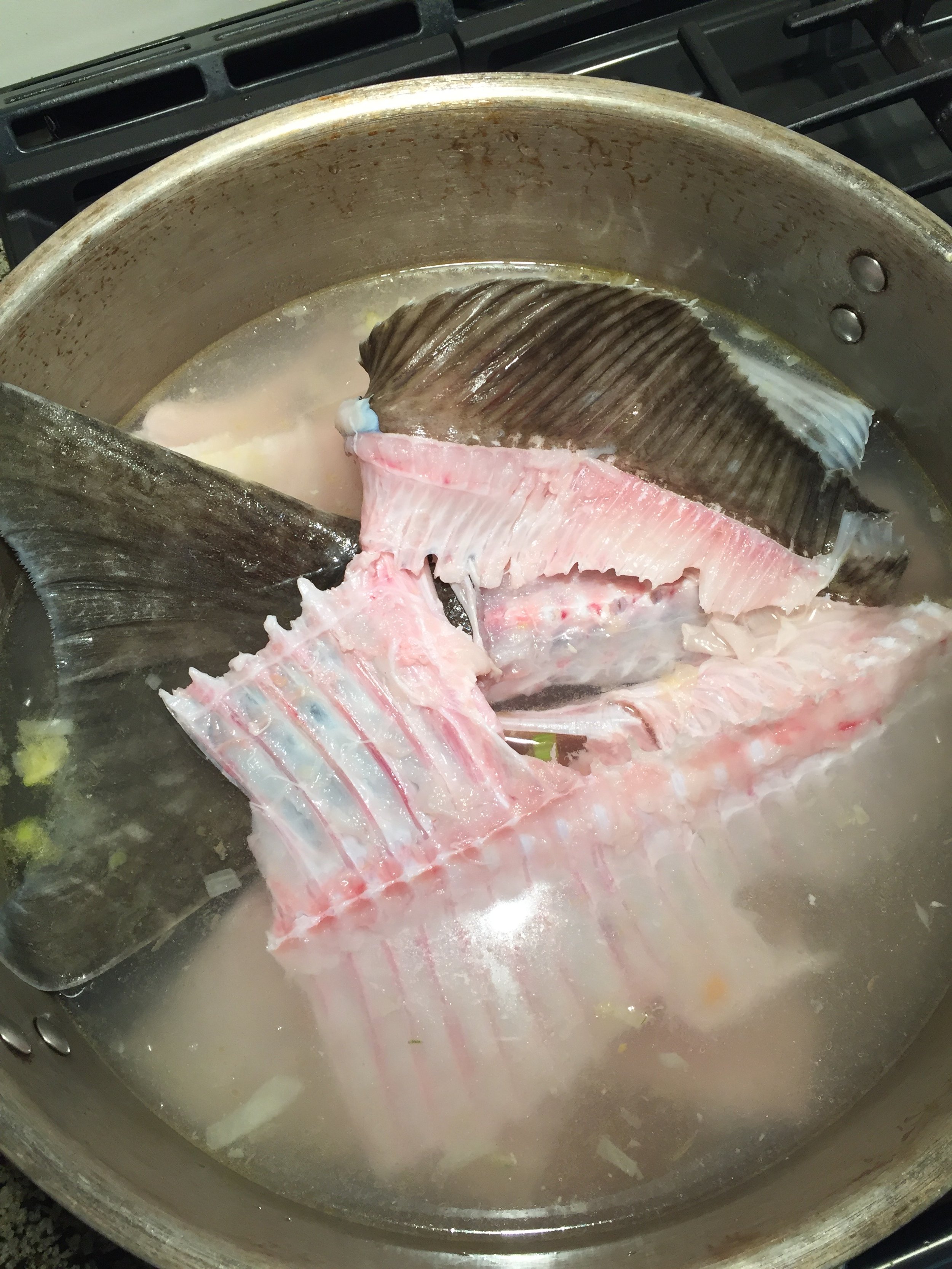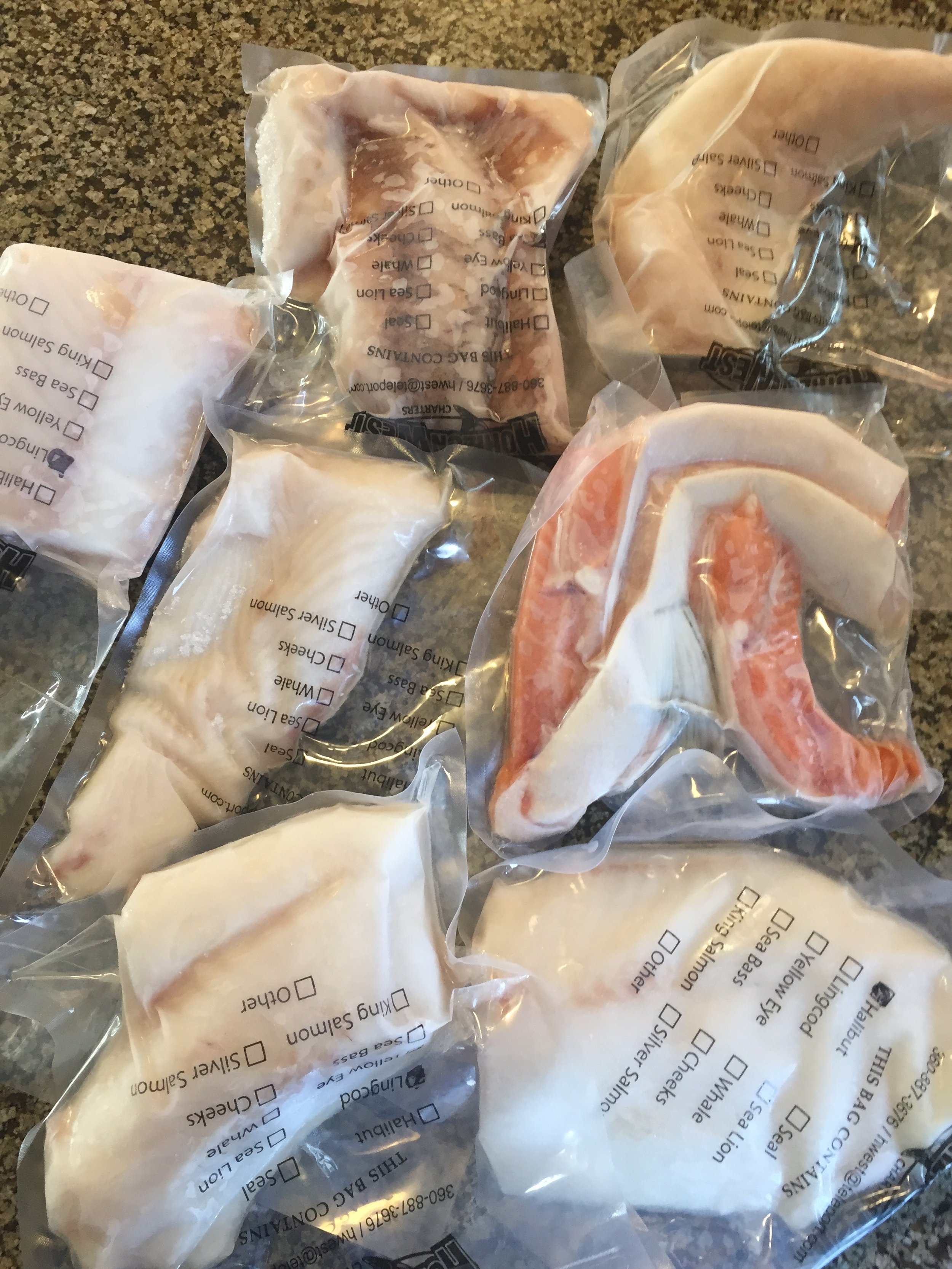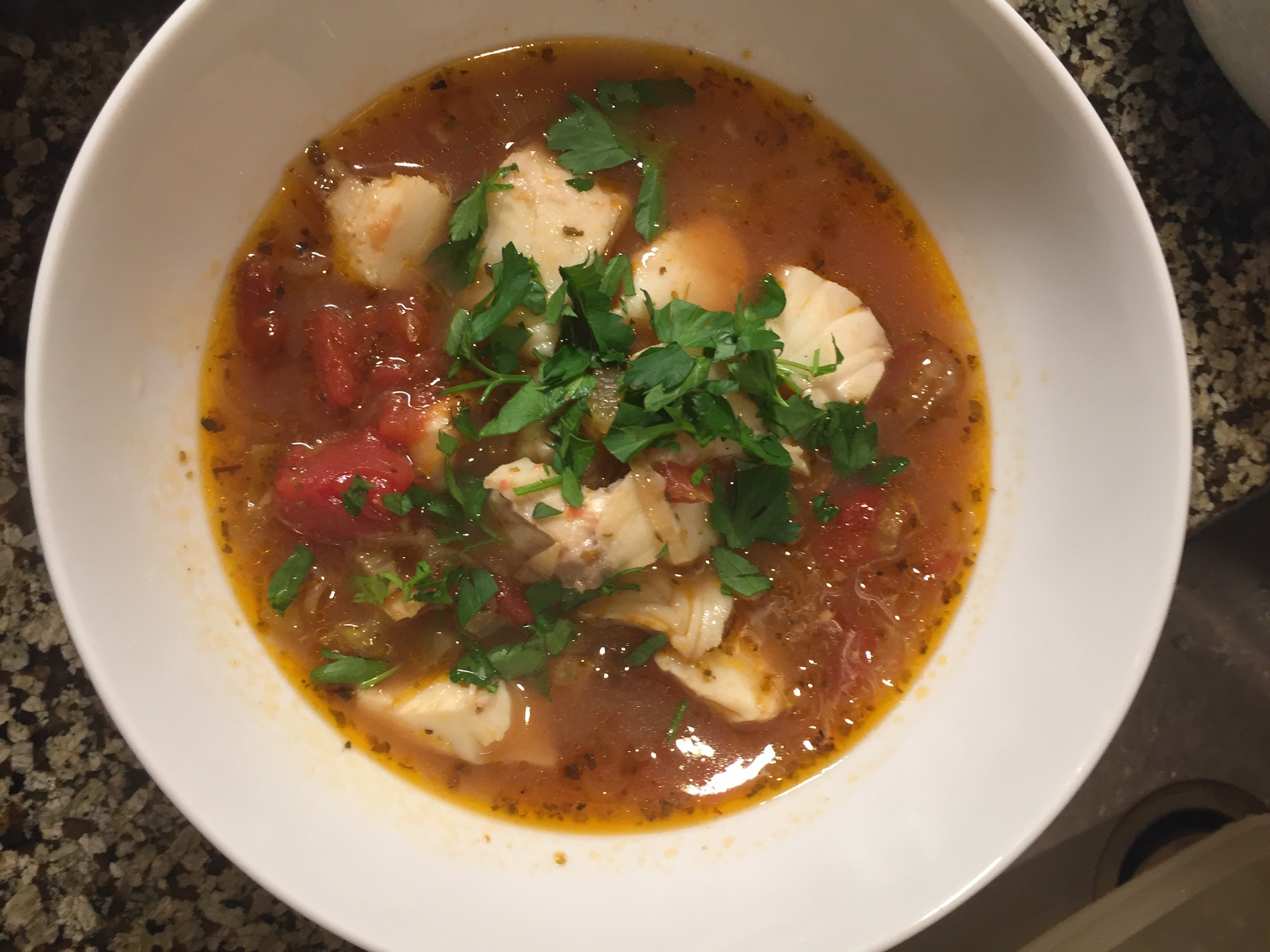Cioppino at Home
It’s easy to make cioppino. It’s as simple as fish stock plus tomatoes and assorted fish. Omit the tomatoes and call it Bouillabaisse if you like. I like to make my own fish stock because the store bought is expensive, may not taste like too much and may be too salty. The bones are typically available frozen in 5 pound blocks at my fish markets and are practically free compared to fish fillets. Fish bones simmer for 20 minutes unlike meat bones which can take hours. Defrost them and chop them up a bit. If you are lazy like I am sometimes, you will have to add more water to cover the bones as you see in my most recent project with a whole halibut collar. Believe me it takes longer to reduce the stock afterwards to be rid of the extra water than it would to chop the bones up to begin with.
Add a few aromatics such as onions, leeks, garlic, celery or fennel to the fish bones along with a few peppercorns, salt and about 1-cup white vermouth or dry sherry. Cover the bones with cold water. Bring to a simmer over medium high heat. Reduce the heat to simmer for 20 minutes. Taste and add more salt and pepper if necessary. If it seem too light in flavor, simmer for another 10 to 20 minutes, but not longer. A generous splash of wine, fish sauce and or hot sauce are great enhancers. Turn off the heat and let the stock cool before straining. Taste it again. If your freezer storage is limited, simmer strained stock to reduce it by half to concentrate flavors and mark the containers to remind you when you use it to add equal parts of water.
Cut up all the fish you have in bite size chunks so they will cook evenly. It’s nice to have three or more fishes, but not essential. Add some shellfish if you like and don’t mind cleaning it. Keep the fish chunks cold in the refrigerator until serving time. As you see in the photo I had an amazing gift of assorted fish — but I didn’t use it all for one batch of soup. Oh, no. I got two or three evenings for special friends with that precious gift. That fish was line caught in Alaska on a private fishing boat. This type of boating experience expertly cleans and packages the fish for you. Fish from a trip like this will be the best of your life. It will be better quality than any you can buy anywhere with a sashimi like texture — in my opinion because of being line caught with no traumatic experiences in a big net or being banged on the head with a bat, plus the prompt packaging and freezing.
When you’re ready to cook the cioppino to serve, sauté shallots and garlic until soft in olive oil or butter, add the fish stock, bring to a simmer. Taste and adjust the seasonings. It should taste delicious before you go any further. Add one can of stewed tomatoes. You can hold the stock at this point in a warm oven for hours if necessary. Have all the garnishes, such as fresh lemon wedges, chopped parsley, croutons, aioli, hot bread, etc. at the ready and the table set. With your guests watching, pour hot water in each serving bowl to warm them. Now and only now, add the fish chunks, stir and simmer a few minutes, 2 or 3 minutes will usually do it. Ladle a generous portion in each bowl. Let each guest carry their bowl to the table.
The difference between my Cioppino at home, which is very good and always wows the crowd and Nick’s Cioppino at Laguna Beach, the gold standard to me, is the typical story of the frugal housewife vs. the restaurant chef. The pro chef is always willing to go over the top for effect and flavors. Nick’s bowl in the last photo demonstrates what you get for top dollar in a high end destination venue. It’s not just the variety of seafood. His stock is superior to any I’ve ever made at home inspite of all my experiments to try to match his. I think they use lobster shells in this stock. Sometimes I think he adds a slice of salted butter to every bowl to help it glide through your mouth.
THE OTTOLENGHI TRICK
I have done this successfully a few times but it’s not my preference. I like to stand stirring the Cioppino, keeping everything in motion, watching carefully to see the individual pieces of fish cooking. Ottolenghi prepares the stock and keeps it in a hot oven at 450 degrees (F). When he’s ready to serve, he adds the fish chunks to the stock and returns it to the oven for 3 to 5 minutes. I have a horror of overcooked anything, particularly fish, and even 5 minutes seems too long to me. The beauty of the technique for the host is the extra few minutes to get wine opened or any other last minute details. And of course the pride you feel saying, “This is the way Ottolenghi does it.” Everyone knows he’s a genius. No matter what technique you prefer, it’s the stock that makes a difference and you made the stock.





